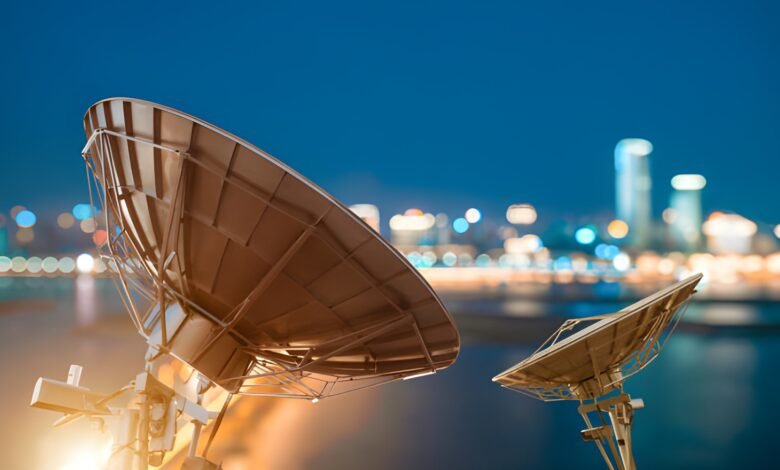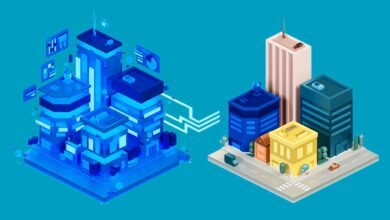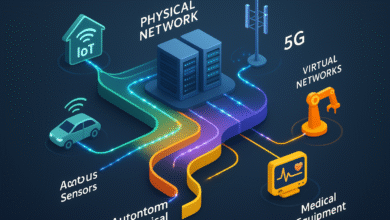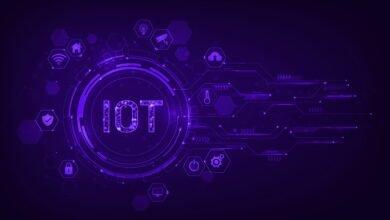What is Satellite LPWAN? The Complete Guide 2026

Satellite LPWAN stands for satellite low-power wide-area network technology that lets devices talk to each other from almost anywhere on Earth. Unlike regular internet that needs cell towers or WiFi, satellite LPWAN sends information directly up to satellites orbiting high above the planet.
This technology is growing fast because it can reach places where regular internet can’t go—like farms in the middle of nowhere, ships on the ocean, or mountains with no cell service.
In 2026, satellite LPWAN is becoming one of the most important ways that companies connect devices and collect data from distant locations. This guide will explain what it is, how it works, and why it matters for your business or projects.
What is Satellite LPWAN? (The Simple Definition)
What is satellite LPWAN? It’s a way to send and receive small amounts of data between devices using satellites instead of ground-based towers or internet connections. The “low-power” part means the devices don’t need much electricity to work—they can run for years on just one or two batteries. The “wide-area” part means the signal can travel over huge distances, sometimes covering an entire country or continent from just one satellite.
Think of it like this: A regular cell phone needs to be close to a cell tower. A satellite LPWAN device can be anywhere under the sky—it sends its signal straight up to a satellite floating in space. The satellite then beams that information down to a receiving station on the ground, which connects it to the internet. This simple idea opens up connectivity for billions of devices that regular networks can’t reach.
The key difference between satellite LPWAN and old satellite internet is that satellite LPWAN is designed specifically for small, weak devices that only send tiny amounts of data. It’s not meant to stream movies or do video calls like traditional satellite internet. Instead, it’s perfect for things like tracking GPS locations, reading water meters, checking soil moisture on farms, or monitoring equipment in forests.
How Satellite LPWAN Works: The Basic Process
Understanding how satellite LPWAN technology works helps you see why it’s so useful for remote areas. Here’s the step-by-step process:
1. Device Sends Data An IoT device—like a sensor on a farm or a tracker on a shipping container—collects information. Instead of looking for a nearby WiFi network, the device sends this data directly upward to the sky at a specific radio frequency.
2. Satellite Receives the Signal A satellite orbiting Earth picks up the signal from the device. Satellite LPWAN usually uses LEO satellites (Low Earth Orbit), which circle the planet between 160 and 2,000 kilometers above the surface. These are much closer than traditional satellites, so they use less power and have less delay.
3. Satellite Forwards Data The satellite passes the information to ground stations on Earth—special receiving centers scattered across the world that act like giant radio antennas.
4. Data Reaches the Internet These ground stations connect the data to the regular internet, sending it to cloud servers or computer systems where people can see and use the information.
5. Return Path (If Needed) If the device needs a command or update, the process works backward—from the internet, to ground stations, to the satellite, and back down to the device.
This whole process happens automatically and uses very little battery power. A device with satellite LPWAN can keep working for 5 to 10 years on just two AA batteries.
The Difference Between LEO and GEO Satellites
Satellite LPWAN can work with different types of satellites, but LEO constellation networks are becoming the main choice for IoT. Here’s why:
LEO (Low Earth Orbit) Satellites:
- Orbit 160-2,000 kilometers above Earth
- Lower latency (less delay when sending data)
- Faster, more reliable connections
- Smaller, cheaper satellites to build and launch
- Cover the whole planet with just 50-150 satellites
- Work better for real-time applications
GEO (Geostationary Orbit) Satellites:
- Orbit 36,000 kilometers above Earth
- Much higher latency (more delay)
- More expensive to build and launch
- Older technology, not designed for low-power devices
- Require larger antennas and more power
- Less common for modern satellite IoT projects
Most new satellite LPWAN services use LEO constellations because they’re cheaper to set up and work better for battery-powered devices.
The Main LPWAN Technologies Used with Satellites
Different companies use different ways to send data via satellite LPWAN. The most popular ones include:
LoRa and LoRaWAN LoRa is a special radio signal that sends data slowly but very reliably over long distances. LoRaWAN is the network system built around LoRa. It’s the most popular choice for satellite LPWAN because companies like Lacuna Space, Sateliot, and others have launched satellites that use this technology. One big advantage is that LoRaWAN devices designed for regular ground networks can also talk to satellites with just a small antenna upgrade.
NB-IoT (Narrowband IoT) This is a cellular technology that phone companies developed, and it can also work with satellites. It sends more data than LoRa but uses more power. Some satellite companies are adding NB-IoT support to their services.
Proprietary Systems Some satellite companies built their own custom systems designed just for space. These are optimized for satellite use but aren’t compatible with ground devices. Examples include systems from companies that want to stand out from the competition.
Each technology has trade-offs. LoRaWAN is more compatible with existing devices. NB-IoT sends more data faster. Proprietary systems are often more efficient but work only in their own networks.
How Satellite LPWAN Coverage Works
One of the biggest advantages of satellite LPWAN is coverage. Here’s how it reaches places other networks can’t:
Global Coverage While a country might have 300,000 cell towers, just 50 to 100 LEO satellites can cover the entire planet. This means you can track a device in the middle of the Pacific Ocean, the Sahara Desert, or the Arctic—places with zero cell service.
No Infrastructure Needed Satellite coverage doesn’t require building towers, digging underground cables, or getting permission from local governments. The satellite just orbits overhead, instantly providing service.
Consistency in Remote Areas In developed countries, most people live in areas covered by regular cell networks. But in developing countries, many people live in remote areas. Satellite LPWAN is often the cheapest way to bring connectivity to these regions without the huge expense of building ground infrastructure.
Revisit Time One limit of LEO satellites is that they don’t stay above one spot forever. A satellite might pass over your location every 2 to 4 hours, depending on which ones are in orbit. This works fine for devices that send data occasionally, but it’s not great for applications needing constant, real-time responses.
Direct-to-Satellite vs. Indirect Connections
Satellite LPWAN systems use two different architectures for how data travels:
Direct-to-Satellite IoT (DtS-IoT)
In this setup, devices communicate straight with the satellite. No ground infrastructure is needed at the device location. Examples include:
- Tracking devices on cargo ships
- Monitoring sensors in forests
- GPS trackers on vehicles in remote areas
- Equipment on oil rigs
Advantages:
- Simple setup—just a device with a small antenna
- Works anywhere with a clear sky view
- Very reliable for remote locations
Disadvantages:
- Devices need a slightly better antenna than ground systems
- Limited to data speeds (slow transmission)
- Can only send/receive when a satellite is overhead
Indirect-to-Satellite IoT (ItS-IoT)
In this approach, ground-based gateways collect data from many devices using regular LPWAN technology, then forward that data to satellites. Think of it like this: thousands of devices talk to a local gateway using LoRa or other LPWAN tech, and the gateway has a satellite connection.
Advantages:
- Devices can be very cheap and simple
- Gateways are reusable and efficient
- Combines the best of ground and satellite networks
Disadvantages:
- Requires at least one gateway in each area
- More complex to set up
- Less useful for completely remote locations
Most modern satellite LPWAN services support both approaches. A farmer might use direct connection for a single tracker on each field, but use indirect connection through a gateway in the farm building to monitor multiple sensors at once.
Real-World Applications of Satellite LPWAN
Satellite LPWAN is already being used in many industries. Here are practical examples:
Agriculture (Smart Farming) Farmers use satellite sensors to monitor soil moisture, temperature, and crop health in fields far from the main farm. They get alerts on their phones about irrigation needs or pest warnings without needing to drive out to check.
Logistics and Fleet Tracking Shipping companies track containers across oceans and trucks across deserts. Satellite LPWAN lets them know exactly where goods are, even in remote areas where regular GPS trackers lose signal.
Environmental Monitoring Scientists use satellite sensors to track wildlife, monitor water quality in remote lakes, and watch glaciers melt. Research stations in the Arctic or Antarctic use satellite LPWAN to send back data automatically.
Utilities and Smart Meters Water companies, electric companies, and gas companies deploy smart meters in remote areas. Satellites automatically collect meter readings without paying someone to drive out and read them.
Maritime Industry Ships use satellite systems for communications and positioning. Satellite LPWAN is perfect for tracking fishing boats, monitoring marine ecosystems, and sending alerts about illegal fishing.
Emergency Response After earthquakes, floods, or hurricanes, regular networks often break down. Emergency teams use satellite IoT devices to stay connected and coordinate rescue operations.
The Main Benefits of Satellite LPWAN in 2026
By 2026, satellite LPWAN technology is becoming mainstream because of several key advantages:
1. Truly Global Reach Unlike ground networks that stop at borders or remote regions, satellite networks work the same way everywhere. A company can use one service to track devices across 100 countries without switching providers.
2. Cost Savings Over Time Although satellite data plans cost more per megabyte than local WiFi, for applications that send only tiny amounts of data occasionally, satellite is cheaper than building ground infrastructure. A water meter that sends data once a day uses a fraction of available bandwidth.
3. No Setup Required Ground networks need installation teams, buried cables, building permits, and local partnerships. Satellite LPWAN just works wherever there’s open sky.
4. Battery Life Devices can run for 5-10 years without changing batteries, which saves money and reduces maintenance headaches.
5. Flexibility Companies can start with a small pilot project and scale up globally without building infrastructure.
6. Resilience If one satellite has problems, others overhead can take over, providing automatic backup.
Also Read: IoT and Satellite Connectivity: Bridging the Gap in Remote Areas
The Challenges Holding Satellite LPWAN Back
Despite its advantages, satellite LPWAN does have real limitations:
Cost Remains Higher Than Ground Networks Launching and operating satellites is expensive, and these costs get passed to customers. A satellite data plan might cost $3-5 per month, while a ground-based LPWAN plan costs 50 cents to $2 per month in urban areas.
Limited Data Speeds Satellite LPWAN sends data slowly (kilobits per second, not megabits). You can’t stream video or upload large files. It’s perfect for small sensor readings but not for cameras or complex applications.
Revisit Latency If you need an answer immediately from a device, you might have to wait minutes or hours for the next satellite pass. This works fine for monitoring but not for urgent controls.
Antenna Requirements Devices need a slightly better antenna than ground-based systems, which adds cost and complexity.
Weather Interference Heavy rain or snow can block signals between ground devices and satellites, though this is less of an issue than with traditional satellite internet.
Limited Capacity While satellites can cover huge areas, they can only handle so many connections simultaneously. One satellite might support millions of devices, but only if each sends very small amounts of data.
Companies Leading Satellite LPWAN in 2026
Several companies are building the satellite LPWAN market:
Lacuna Space (UK) One of the leaders in satellite IoT using LoRaWAN. They’re focused on making satellite devices compatible with regular ground devices. They’ve partnered with other satellite operators to expand coverage.
Sateliot (Spain) A company using NB-IoT satellite technology to provide coverage in Europe and beyond. They’re backed by major telecommunications companies.
Myriota An Australian company building small, efficient satellites specifically designed for IoT. They focus on areas with no ground coverage.
Swarm Technologies (now part of SpaceX) Uses tiny satellites called “Swarm Nodes” to provide very cheap satellite connectivity. SpaceX is integrating this into their broader satellite plans.
Traditional Satellite Companies Older companies like Inmarsat and Globalstar are adding LPWAN capabilities to their existing satellite networks.
How Satellite LPWAN Compares to Other Technologies
Here’s how satellite LPWAN stacks up against other connectivity options:
vs. 4G/5G Cellular:
- Cellular is faster and cheaper in cities
- Satellite works in remote areas where cells don’t
- Satellite is more global; cellular has gaps
vs. WiFi:
- WiFi is very fast but needs infrastructure
- WiFi is cheap but only works close to a router
- Satellite works everywhere but is slower
vs. Ground-Based LPWAN (LoRaWAN, NB-IoT):
- Ground LPWAN is cheaper per month
- Ground LPWAN is faster locally
- Satellite works where ground networks don’t exist
vs. Traditional Satellite Internet (Starlink-style):
- Satellite internet is much faster
- Satellite internet is more expensive
- Satellite LPWAN uses less power and is cheaper for tiny data amounts
- Satellite LPWAN is better for global IoT scale
The Future of Satellite LPWAN
Looking ahead to 2026 and beyond, several trends are shaping satellite LPWAN:
More Satellite Launches Companies are launching dozens of new satellites monthly. By 2026, thousands more will be in orbit, providing better coverage, more capacity, and faster service.
Hybrid Networks Most devices will use both ground and satellite connections. A device sends data through the cheapest available network—ground connection when near a city, satellite when traveling to remote areas.
Standardization The industry is moving toward standard technologies like LoRaWAN and NB-IoT for satellites, making it easier to build devices that work anywhere.
Lower Costs As companies build bigger constellations and operate them longer, costs will drop. The price per month for satellite data should fall significantly.
Expanded Coverage By 2026, coverage gaps are shrinking. Areas that had no satellite service might get multiple options.
Integration with 5G and Private Networks Satellite LPWAN will become one layer in larger networks that also include 5G, private ground networks, and WiFi.
New Applications As costs drop and coverage improves, new uses will emerge—things we haven’t imagined yet in agriculture, environmental monitoring, smart cities, and emergency response.
Is Satellite LPWAN Right for Your Business?
Ask yourself these questions to determine if satellite LPWAN makes sense for your project:
1. Are your devices in remote areas? If yes, satellite might be the only option. If you’re in a city, ground networks are usually cheaper.
2. Do you need global coverage? If you track devices across countries or oceans, satellite simplifies everything.
3. Do devices send only small amounts of data? If you’re collecting a few readings per day, satellite is efficient. If you need constant streaming, satellite isn’t the answer.
4. Can devices wait for responses? If you need instant answers, satellite’s delay might be a problem. If occasional responses are OK, it works great.
5. Is battery life critical? If you need devices running for years without maintenance, satellite’s low power is perfect.
6. What’s your budget? Satellite is more expensive per month but saves money on infrastructure. Calculate the total cost over several years.
If most of your answers are “yes,” satellite LPWAN could be a great fit.
Conclusion
Satellite LPWAN is a game-changing technology that brings internet connectivity to places that regular networks can’t reach. By using satellites orbiting Earth, small battery-powered devices can send data from anywhere—farms, ships, forests, mountains, and remote regions. The technology works by having devices communicate directly with satellites, which then relay information to ground stations and the internet.
While satellite LPWAN costs more per month than ground networks in developed areas, it’s often cheaper overall because it needs no infrastructure investment. In 2026, satellite LPWAN is becoming mainstream in agriculture, logistics, environmental monitoring, utilities, and emergency response. Companies like Lacuna Space, Sateliot, and others are building satellite constellations that use proven technologies like LoRaWAN and NB-IoT.
As more satellites launch and costs drop, expect satellite LPWAN to expand into new industries and regions. For any organization tracking devices or collecting data from remote or global locations, satellite LPWAN is worth serious consideration as part of their connectivity strategy. The combination of global coverage, low power consumption, and improving affordability makes satellite LPWAN one of the most important IoT technologies of the decade.











